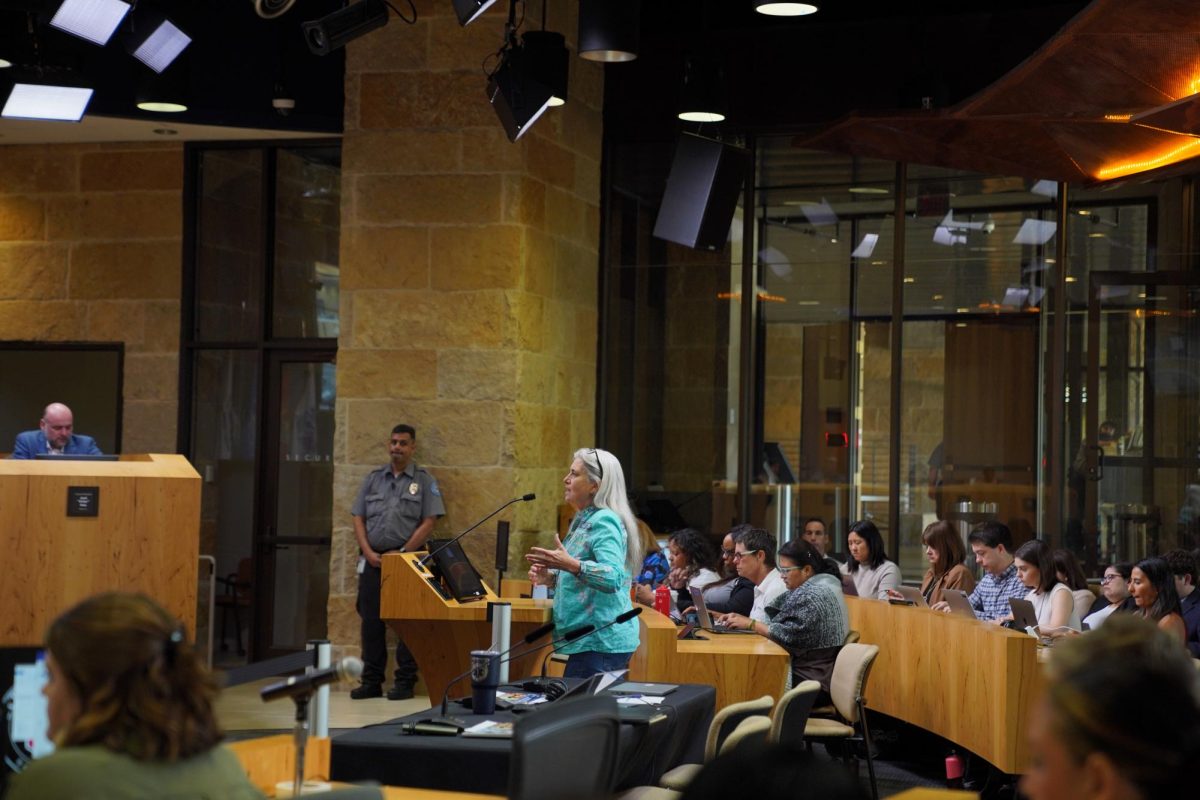The City of Austin is set to finish the installation of its left-turning safety program in the next month.
The left-turn calming pilot program implements treatments to improve pedestrian safety at 16 left turns in the city, according to a spokesperson from the Austin Transportation and Public Works Department. Each site now has hardened centerlines, either in the form of rubber speed cushions or posts on the yellow centerlines of intersections. Some sites also implemented smaller six-foot speed cushions on the intersection side of the crosswalk.
Installation began mid-March. Austin’s Vision Zero Program, a member of the nationwide network pushing to decrease traffic-related fatalities, adopted the pilot program.
“Using five years of historical crash data, Vision Zero ranked intersections in the city by the number and severity of left-turning crashes involving pedestrians,” the Austin Transportation and Public Works Department spokesperson said in an email. “At the 16 chosen sites, there were 29 left-turning crashes involving pedestrians, including eight severe injury crashes and 14 minor injury crashes.”
The choice of each location took into account geometry, signals, geographic diversity and parking lanes. Some sites were chosen because of their status as Equity Analysis Zones. The Austin Strategic Mobility plan uses the Equity Analysis Zones to focus city efforts on historically underrepresented and underserved communities.
Adam Greenfield, director of advocacy for Safe Streets Austin, said that cars turning right as pedestrians cross the street is historically one of the most common points of collision. Greenfield said the city of Austin wants 50% of commutes to not consist of a person driving alone in a car.
“The way that you make walking more of an option for people is you make it safe, useful, interesting and comfortable,” Greenfield said.
From preliminary data collected, the city found the median turn speed fell by two miles per hour compared to baseline data. According to the Austin Mobility newsletter, the program will continue to analyze the data from both the treated sites, as well as control sites.















